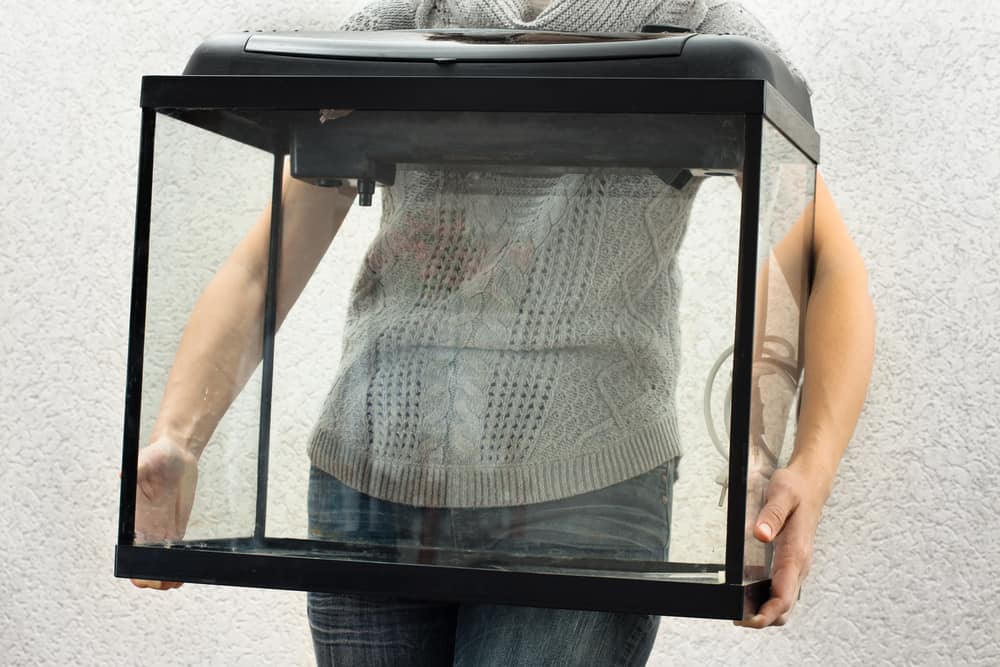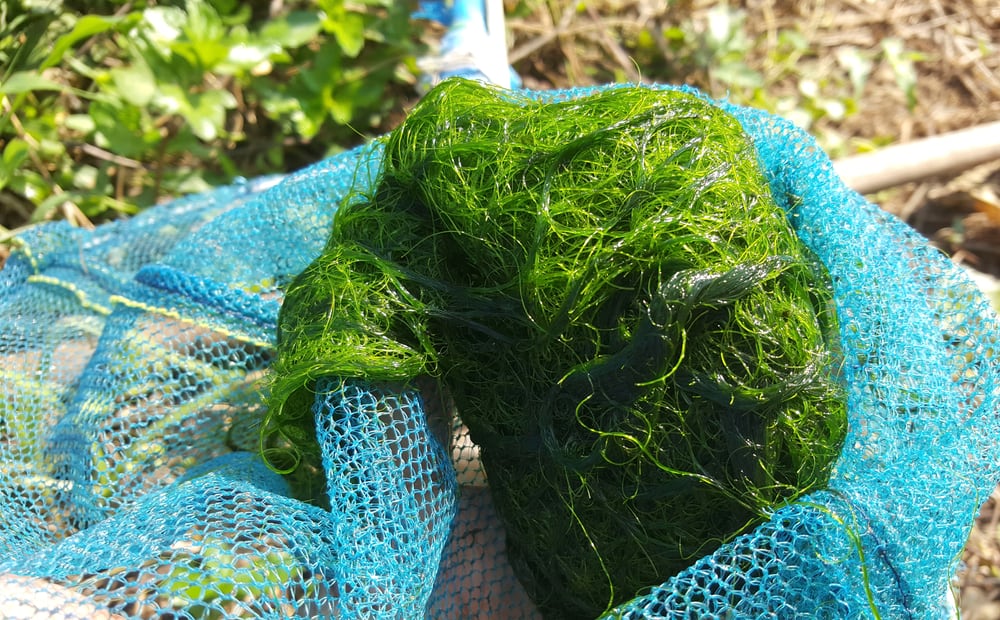
Every aquarist wants their tank to be clean and provide the best possible environment for their fish.
One of the best ways to do that is to make sure you have a proper filter to keep your tank and its water at its best.
After some time, you decided on a canister filter for your tank: heavy duty, gets the job done, what more could you need—or need to know?
Well, it’s important to know how your canister filter works so you can clean it out properly, and if something goes wrong, you know exactly where to identify and find the problem.
How Does a Canister Filter Work?
A canister filter works by drawing water up something called the lift tube.
From there, the water is pushed through a few different filters to clean it, and once it’s clean, the water is returned to the aquarium via a different tube.
It’s a simple process, and your filter’s design can vary between models or brands.
We’ve given you a brief oversight of how a canister filter works as a whole, but what about each individual piece?
Let’s get started with the beginning of the entire process: the lift tube!
1. The Lift Tube
A lift tube is a plastic tube which will draw water up from your aquarium into the canister filter.
Once the lift tube has begun to pull the water up, it transfers it to an external filter chamber, where the water is then pushed through several filters.
The lift tube is only one of two tubes that are an essential part of a canister filter.
The other is an outlet tube, which releases the clean water back into your aquarium.
While we’re on the subject of tubes, why don’t we address the various ways the filtered water can be reintroduced into your tank?
The water, after going through the filters, can be released back into your tank via a jet return, a spray bar, or a lily pipe.
You can choose a method that works for your tank, which is another reason a canister filter is such a great investment.
Now we come to the truly interesting part of a canister filter: the actual filtration methods!
2. The Filters
The actual filtration process of a canister filter is really fascinating when you take the time to learn about it.
It begins with something called mechanical filter media.
This is what your unfiltered water will go through first.
Mechanical media is a mesh part of the filter that will catch any large particles and bits of debris that may be in the water to prevent the other areas in the canister filter from clogging.
After that will occasionally come the dual-purpose media—which you can pack in yourself if you choose—that can serve as a biological and mechanical media.
If there is a dual-purpose media in your canister filter, there will be several layers.
Next comes the biological media, which is essentially the home for beneficial bacteria that live in your canister filter.
Biological media is usually a porous object to allow the bacteria to thrive and eat toxins in your aquarium’s water.
The biological media is responsible for removing things like nitrate and ammonia.
Finally, there’s the chemical media.
The chemical media is the final phase your tank’s water will go through before it is re-released into your aquarium.
The chemical media removes toxins and alters the water’s chemistry to improve the water’s overall quality.
Once the water has gone through all the filters, it’s pushed out of the filter via another tube and sent back into your aquarium.
3. Media for the Mechanical Layer
The first layer is a crucial part of your canister filter, and it’s important to pick the right media to go inside of it.
There are a few different options to choose from, and your tank’s setup, as well as the species housed there, can be a deciding factor when it comes to figuring out what you need.
One media is wool, also known as floss, with wool needing frequent changes.
When left unchanged for long periods of time, floss can begin to produce nitrate if you don’t swap it out every week.
On the bright side, it holds up well for that period of time, and can hold strong against the water being pumped through it.
Another is an assortment of sponges, which range between coarse and fine, meaning they will catch most large bits of debris.
However, we recommend reserving the sponges for use with biological media instead of mechanical.
You could use bonded pads, which are one of the most commonly used types of mechanical media out there.
They’re the best if you’re looking for something customizable, as they can be cut to size and are easy to install.
The only downside to them is that they are on the expensive side of aquarium care.
It’s important to choose the right mechanical media, and to change it frequently, as leaving it unchanged and in poor condition will not only put your fish at risk, but it will kill off any beneficial bacteria living in the biological media of your canister filter.
4. Media for the Biological Layer
The biological layer of your canister filter is just as important as every other layer, and it’s important to choose the right media to house your bacteria.
For this layer, you will have to choose a porous material.
You could choose sponges or pads, like in the mechanical media options, or another unique material.
We recommend sponges for this one.
You can use ceramic rings, which house helpful little bacteria that will remove ammonia and nitrates from the water.
Ceramic rings (which are not always rings) are full of small holes for the bacteria to live and thrive in.
There is another type of bacteria that can live in ceramic rings that can survive without oxygen, but it will live deep inside the ceramic.
Another option are bio stars and bio balls, which are made of plastic, with a ton of nooks and crannies for bacteria to harbor itself in.
Another material you may already have is gravel, which is something that can be used if you don’t have any other options.
It’s better than nothing at all, but it’s better to spring for something that will make a better home, such as a sponge.
Gravel is probably best used to jump start a bacterial cycle if it’s a new tank or filter.
Finally, you could use sand.
Sand is a fine type of biomedia, as long as you make sure it doesn’t get into the uptake of your canister filter.
It’s important to let the sand settle before turning your filter back on again.
5. Media for the Chemical Layer
The chemical layer is extremely important, as the right chemical media can do wonders for your water quality and your fish.
A popular media for this layer is activated carbon, which absorbs chlorine, chloramine, phenols, and tannins that may be in your aquarium’s water.
It’s important for us mention that, if you are treating any sick fish with medication, you should remove all charcoal from the filter.
Activated charcoal should be changed out once a month, and it’s vital that it’s changed out regularly.
The components it removes from the water will bind, and the charcoal with eventually become too saturated to work.
Finally, there are various resins you could use in this final layer.
Resins are very commonly used in water purification, and man-made resins are specifically designed to remove harmful chemicals, meaning you can pick and choose to fit your tank’s needs.
Your Canister Filter’s Power Source
Like any other filter, your canister filter has a power source keeping it going, like an in-tank pump or an internal motor.
Quite a few canister filters will have internal motors which rely heavily on gravity to work properly.
Others will incorporate an in-tank pump, which will force the water into the canister instead of pulling it in.
How Canister Filters Help Your Tank
Canister filters are a great choice for larger tanks, as they can actually handle large jobs.
They filter out irregularities in the water such as ammonia, debris and large particles, nitrates, and other toxins and oddities that may be floating around in your tank.
Because of the way canister filters are designed, they’re not likely to suck up any fish, not like a power filter.
Canister filters are great options for planted and saltwater aquariums, but that’s not to say they don’t work just as well in freshwater tanks, too.
Canister filters can have different impacts on your tank depending on the type of media you pack into it.
It’s also important that you take care of your canister and keep up with the maintenance it requires.
Canister Filter Maintenance

Just like any other machine, it needs to be cared for properly to keep it running.
Knowing how they work can help you understand how to keep your filter up and running properly.
The maintenance will depend on the media, model, and brand of your canister filter, so be sure to check the instructions which come with your canister filter in order to clean and care for it properly.
Since there’s a plethora of media you can use in your canister filter, they will either have to be rinsed and cleaned off regularly, or replaced entirely, depending on what you use.
If you choose to use any carbon at all in your filters, be sure to replace the filters frequently so the carbon doesn’t become saturated and release toxins into your tank.
One thing that should be done across all canister filters, though, is cleaning out their tubes.
Thankfully, you can get your hands on an aquarium tube cleaning kit at any local pet store or trusted website.
We wouldn’t recommend a canister filter to any aquarists just starting out, as they can be complicated to maintain and use.
However, as long as you follow the instructions with your filter and its tubes are cleaned on a regular basis, everything should go just fine.
You Can(ister) Too!
Now you know how a canister filter works!
With your newfound knowledge, you can maintain, fix, and pack your own media into your canister filter without a hitch.
You can even offer a hand or tips to new and aspiring aquarists, or even send them our way.
Whatever you do, we thank you for taking the time to read about your filter, and as always, we wish your fish the best.
What kind of media did you pack into your canister filter?
Has your tank’s water quality improved?
Do you have any tips you’d like to share?
Let us know in the comments down below.
We always look forward to hearing from you.






Leave a Reply
You must be logged in to post a comment.